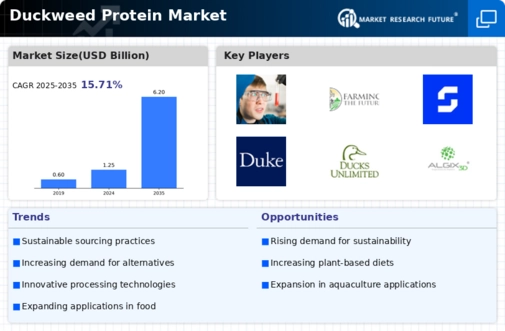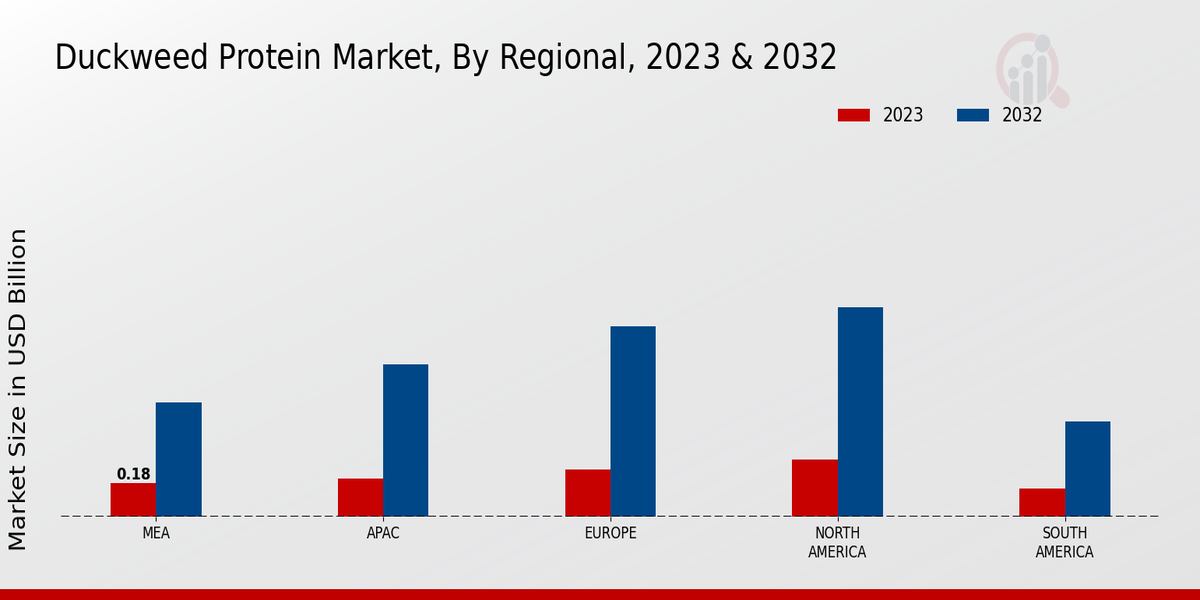Market Growth Projections
The Global Duckweed Protein Market Industry is poised for substantial growth, with projections indicating a market value of 1.25 USD Billion in 2024, escalating to 6.2 USD Billion by 2035. This remarkable increase suggests a compound annual growth rate (CAGR) of 15.7% from 2025 to 2035. Such growth is likely driven by various factors, including rising consumer demand for sustainable protein sources, nutritional benefits of duckweed, and advancements in cultivation technologies. As the market evolves, it may attract new players and investments, further enhancing its potential and positioning within the global protein landscape.
Nutritional Benefits of Duckweed Protein
Duckweed is recognized for its impressive nutritional profile, which includes high protein content, essential amino acids, vitamins, and minerals. This makes it an attractive option for health-conscious consumers and those seeking alternative protein sources. The Global Duckweed Protein Market Industry benefits from this trend, as duckweed can serve as a complete protein source, appealing to vegetarians and vegans alike. Furthermore, its digestibility and nutrient absorption rates are favorable compared to other plant proteins. As awareness of these nutritional advantages spreads, the market is likely to expand, contributing to its anticipated growth in the coming years.
Government Support for Alternative Proteins
Government initiatives aimed at promoting sustainable agriculture and alternative protein sources are significantly influencing the Global Duckweed Protein Market Industry. Various countries are implementing policies and providing funding to support research and development in plant-based proteins, including duckweed. This support not only encourages innovation but also raises awareness among consumers about the benefits of alternative proteins. As governments recognize the potential of duckweed to contribute to food security and environmental sustainability, the market is likely to see increased investment and growth, aligning with the projected CAGR of 15.7% from 2025 to 2035.
Rising Demand for Sustainable Protein Sources
The Global Duckweed Protein Market Industry is experiencing a surge in demand for sustainable protein alternatives. As consumers become increasingly aware of the environmental impact of traditional livestock farming, duckweed presents a viable solution due to its rapid growth and minimal resource requirements. Duckweed can grow in various aquatic environments, requiring less land and water compared to conventional crops. This shift towards plant-based proteins is reflected in the projected market value, which is expected to reach 1.25 USD Billion in 2024 and grow to 6.2 USD Billion by 2035, indicating a robust CAGR of 15.7% from 2025 to 2035.
Innovations in Duckweed Cultivation Technology
Advancements in cultivation technology are playing a pivotal role in the Global Duckweed Protein Market Industry. Innovations such as vertical farming and aquaponics are enhancing the efficiency of duckweed production, allowing for higher yields in smaller spaces. These technologies not only optimize resource use but also reduce the carbon footprint associated with protein production. As these methods become more widespread, they are expected to lower production costs and increase accessibility to duckweed protein. This could further stimulate market growth, aligning with the projected increase in market value from 1.25 USD Billion in 2024 to 6.2 USD Billion by 2035.
Growing Interest in Aquaculture and Animal Feed
The Global Duckweed Protein Market Industry is also benefiting from the increasing interest in aquaculture and sustainable animal feed. Duckweed serves as an excellent feed option for fish and livestock due to its high protein content and digestibility. As the aquaculture sector expands globally, the demand for sustainable feed alternatives is rising. Duckweed's ability to grow in nutrient-rich water bodies makes it a suitable candidate for aquaculture feed, thereby enhancing the overall sustainability of the industry. This trend is expected to contribute to the market's growth, with projections indicating a rise from 1.25 USD Billion in 2024 to 6.2 USD Billion by 2035.








